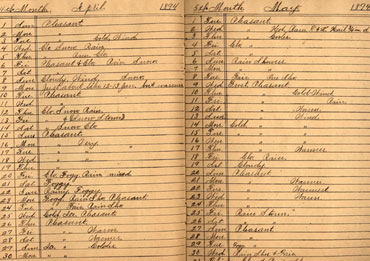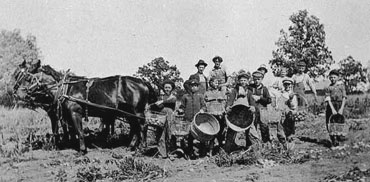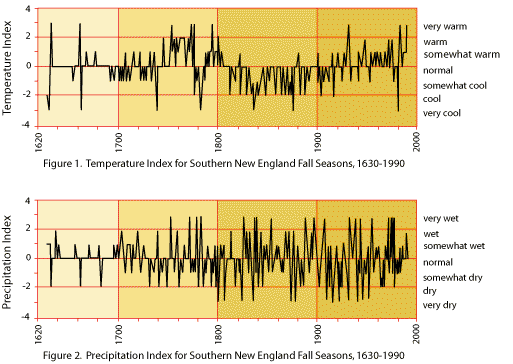

Computers are useful in their abilities to "crunch" data extremely fast. Climatologists are able to use this speed to order and distribute the results of work generated by others.
Although most casual observers of weather data only pay much attention to the quite recent past, it is possible to extend our knowledge of past weather to the time of European settlement here in North America.
Private and academic individuals began to record the weather systematically. Caleb Holyoke, John Winthrop, and Erza Stiles are examples. Winthrop's students were trained to observe the weather four times a day, recording temperature, precipitation, cloud cover, wind direction, and speed as well as noticing unusual weather.
Close to a thousand students followed Winthrop's lead. A standard description was created and the data collected, in some cases into the 1830's. The state of New York and Pennsylvania began systematic collection of data in 1825 using instruments supplied for the schools and academies which did this work. These data are extensive potentially useful. All of the material has been placed on microfilm and are here in the Institute.
Climate Change and New England Agriculture: A Case Study

W.R. Baron, of the University of Northern Arizona, and David C. Smith, of the Climate Change Institute, developed a standard dictionary of weather and climate names and applied the results to obtain the longest records in graphs and plots which describe a virtually complete record in New England from 1640. Examples of these results are here on this poster. This methodology provides some startling results. The material can be analyzed by the month creating a very long record.
Other plots provide pictures of first and last killing frosts, (that is growing seasons), the dates of corn harvest, corn planting, data on oats, hay and apples, and other crops may be teased out from these data sets.
Selected References
Baron, W.R., and D.C. Smith, 1996. Growing Season Parameter Reconstructions for New England Using Killing Frost Records, 1697-1947. Maine Agricultural and Forest Experiment Station, University of Maine Bulletin 846.
Baron, W.R., 1992. "1816 in Perspective: the View from the Northeastern United States." The Year without a Summer? World Climate in 1816, ed. C.R. Harington. Canadian Museum of Nature, Ottawa, 124-144.
Smith, D.C., ed., 1986. Climate, Agriculture and History. Agricultural History Society, Washington, D.C..
Bliege Smith, D.C., W.R. Baron, A.E. Bridges, J. TeBrake, H.W. Borns, 1982. "Climate Fluctuation and Agricultural Change in Southern and Central Maine, 1765-1800." Maine Historical Society Quarterly, 21 no. 4, 178-200.
Baron, W.R., D.C. Smith, H.W. Borns, J. Fastook, and A.E. Bridges, 1980. Long Time Series Temperature and Precipitation Records for Maine, 1808-1978. Maine Agricultural Experiment Station Bulletin 771. University of Maine, Orono, 255pp.

